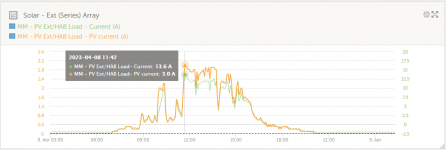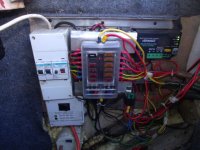If you plan to connect the habitation electrics through the LOAD terminal on the
Victron MPPT100/20, you should take note that the maximum current on that circuit is strictly 20A. If you exceed that, the circuit turns off.
Generally this is ok as you are unlikely to have that level of load, but if you have any DC devices on the output that have a bit of a surge on startups, you might find a problem. For example you cannot run a compressor fridge off the LOAD circuit. A Diesel Heater might cause issues depending on what else you might have running.
Also, depending on your general electrics setup, if you DO insert the controller in a certain position
"so all the load is going through the device", fitting it in-between the
Battery and the Electrics control Box (be it Sargent, Schaudt, CBE, or whatever), it will likely give you issues as the current from a charger would as you are pondering go INTO the LOAD, which is not what you want to be doing.
Basically your best bet is to forget the LOAD terminals are even there on the
solar contoller if your Motorhome has otherwise got a bog-standard Electrical setup.
Battery =>
Battery
Solar =>
Solar Panels
LOAD => nothing!



